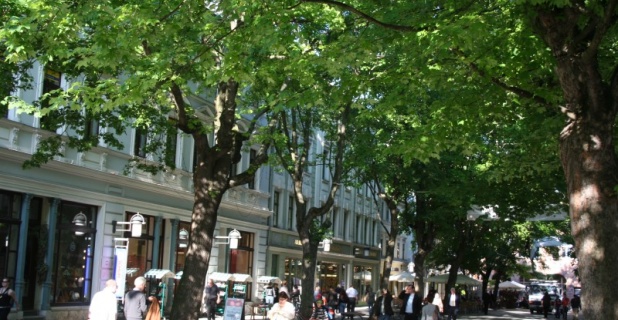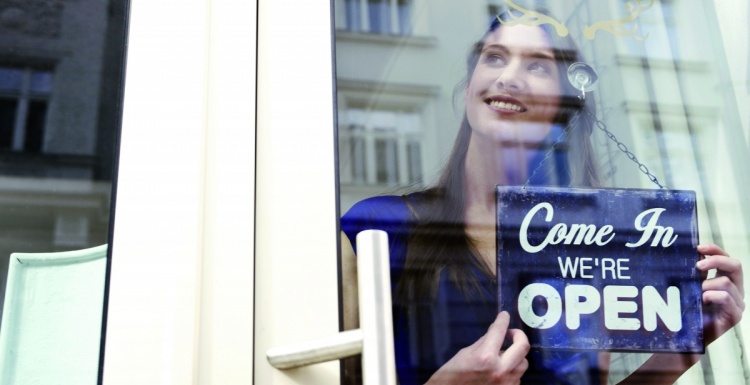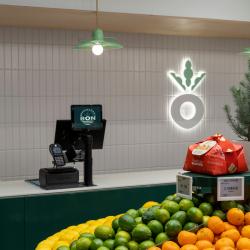Interview • 01.08.2011
"Unique features“ are also important in the cityscape
Interview with Dr. Ursula Schirmer, spokesperson of the German Foundation for Monument Protection (Deutsche Stiftung Denkmalschutz)
Monument protection is not just “beautiful“, but also an important economic factor. Dr. Ursula Schirmer of the German Foundation for Monument Protection holds this view. In this EuroShop interview the art historian describes what makes cities unique and where customers feel comfortable. What’s worth protecting and how things should be restored, is viewed differently in the course of time. For instance awareness for the quality of good architecture of the fifties and sixties is slowly growing. If retail designs its renovations carefully, monument protection is not turning into an obstacle.
Dr. Schirmer, as an art historian what bothers you the most about German pedestrian areas?
If you keep your eyes open when you walk through pedestrian zones, you unfortunately often notice that the historical facades don’t start until the second floor. If you don’t walk through the streets with your head tilted backward, you often no longer recognize their beauty. The first floor area for the most part is only structured by large glass surfaces, buildings simply no longer have a foundation and they are floating so to speak.
In which cities to you feel particularly comfortable? And why?
Those cities that remained conscious of their emergent structure and their regional distinctiveness, to me are those places where I immediately feel comfortable. In Luneburg, in Görlitz or in Quedlinburg I instantly know where I am. In places where you can interchange buildings, facades and also stores, this type of identification doesn’t even come up. If you actually no longer are able to recognize and sense in what city you are in, it’s not worth to drive there. Only the famous “unique features“– precisely also in the architecture and urban development – turn a city into an interesting and treasured travel destination.
Monument protection is always a product of its time. What is your foundation currently especially emphasizing – compared to its founding years? What is changing in monument protection services?
Last year the German Foundation for Monument Protection was able to celebrate its 25th anniversary. Four years after its creation, the borders opened up and a completely unexpected field of work unfolded. The time of the German reunification with its need for speedy and unfortunately also nationwide urgent assistance then formed our key activities for 10 to 15 years. Fortunately, in terms of preservation of monuments infinite amounts were accomplished in the former Eastern German states. Entire city districts, famous individual buildings, but also unknown incunables in the rural areas were being saved.
Now we notice that also in the former Western German states – in many cases again! -help is necessary. After a strong phase of monument protection in the seventies and eighties, unfortunately continuous care, which after all is the actual meaningful task when it comes to preservation of historic building fabric, was missing. That’s why we once again assist nationwide and also are trying to support and take action, especially where this responsibility is being assumed. Sadly, in many places the monument protection acts, support programs and the staff in monument protection agencies is called into question. Under the header of “lean government“, a lot is unfortunately lost in terms of public responsiveness, level of service, expert advice and assistance. This increasingly worries us, because private initiatives like associations or foundations like the German Foundation for Monument Protection cannot and don’t want to replace public authorities, but rather want to complement them. Especially personal dedication needs the agencies as reliable partners and quality guarantors.
“Once monument protection is here, renovation gets expensive and takes a lot longer than planned. “What do you say to this criticism by retailers?
Are the supporting measures adequate enough to encourage retailers to preserve historic building fabric?
If a renovation gets expensive and takes longer, it consistently is due to lack of planning for the individual building. Every retailer deliberates and checks very closely when it comes to location, access to transportation and the environment for his place of business. This kind of care should also be put into dealing with existing building fabric. What kind of potential does a building have? What can I really place in there? What special characteristics can I use for my purposes? What turns my store into a special attraction that draws in customers? This kind of engagement with a building is very difficult for many chain stores, where after all, all stores are supposed to look the same. But is a quick solution really attractive to customers? In Lübeck for instance the charm of the building – from the red brick to the old wainscoting and even the quirky small rooms – is part of the marketing concept of these unique stores in this historic town.
Historic downtown areas were not built for today’s stores. Where are you willing to compromise when it comes to old building fabric?
JEvery historic monument is an individual case. That’s why you always need to look for individual solutions of course. This may be more time-consuming, but it consistently leads to great results – which also benefits the retailers. An attractive store is an asset in competition. Especially in the historic city centers there are also many historically grown businesses, which were built for this kind of use. Compromises can be found if you start a constructive dialogue with monument agencies at an early stage. A jointly developed solution will then be faster and easier approved.
Should you preserve old facades, even if the windows are only mere backdrops anymore, since the buildings were gutted and the height between floors was changed?
Unfortunately, you are right in that in the past a lot has already been destroyed. This makes the remains all the more precious. Particularly the storefronts are not just the casing of an individual building, but also shape the road- or open space after all. I think it’s absurd how on the one hand you build backdrop sceneries like the city palace (“Stadtschloss“) in Braunschweig by arguing better sales volumes for a shopping mall, yet on the other hand you object to the preservation of original building fabric as being an imposition. And in the same manner, how there is a debate about every shop window increase to arouse the customer’s interest – and during the lucrative Advent season of all things precisely those areas are being artificially reduced with stuck-on ladder steps and artificial snow.
Large chain stores show no respect for urban needs. Is that true? Are small specialty retailers more open towards preserving their historic building fabric?
In many cases this is due to the fact that the local specialty retailer has a closer contact to his town. After all, these are often family businesses with a long tradition, which is also documented in the appearance of the stores. In many cases they are also the building owners, which is reflected in the search for sustainable and long-term design. If I am not just investing with the next quarterly financial statement in mind, but also invest for the next generation, it can only have a positive impact on the historical monument.
When you hear the keyword “historical“, you think “old“ and ”golden glory.“ When will the fifties be protected? Is there any sympathy for this?
The inventory in some German states, like for instance in North Rhine-Westphalia already has reached the sixties. The postwar buildings have found their fans especially among the younger generation. Many are intrigued by the elegant and simple postwar buildings. If I refer to a historical monument like the Hardenberghaus in Berlin for instance, it is not just a sought-after office building, but it also offers attractive shops.
Where does German monument conservation rank compared to the rest of Europe?
Preservation of historical monuments in Germany is actually well situated. It has a long tradition with competent experts in its agencies. Unfortunately, politics always likes to cut costs in culture. It is often forgotten that monument conservation is not just “beautiful“, but also an economic factor, a soft location factor. Monument conservation is applied middle class aid. Europe envies us of our reliable professional standards – and our skilled trade. After all, the mentioned solutions for conservation and renovation have to be implemented with quality and suited to the historical monument in equal measure. And here the skilled trade is just as indispensable as a great architect. In this way, owners of historical monuments, craftsmen, architects and monument conservators in the end are the guarantors for historical city centers where people feel comfortable, love to travel to and in whose stores they also like to spend money!
Interview by René Schellbach, EuroShop.de
Reading suggestion from our interview partner Dr. Ursula Schirmer
- www.stralsund.de












